Weather & Watering
- The weather is getting warmer and possibly drier so remember that all shrubs and bedding plants which were planted out last month will need regular watering. They have not had time to grow their roots out of the compost that they have been growing in, so if left un-watered they will soon deteriorate.
- Watering is the most important task in all gardens. It is essential to give all plants a good soaking in the evening after the sun has set so that the water will not evaporate away. If the surface soil is only moistened it will encourage plants to make surface roots, which are more liable to suffer from drought.
- ‘A good hoe is as good as a watering can’… loosening the soil will not only keep weeds down but help prevent cracks appearing in the soil, as this is where moisture will evaporate from.
- Watering a garden can be tedious. You can cut down on watering (and your bills) by mulching. Mulching is putting a layer of material on the surface of the soil, around the plants…make sure the soil is wet before applying. This layer helps to stop water evaporating from the soil’s surface and, if you mulch with an organic product, you’ll add back nutrients to the soil as the mulch slowly decomposes.
- Mulching also has the great advantage of cutting down the need to weed. The mulch layer, if thick enough (minimum of about an inch) will help suppress weeds.
- Another group of mulches are the Non-biodegradable type. These do not boost the fertility or structure of the soil, but they do suppress weeds, conserve moisture and some have the added advantage of looking decorative. Slate, shingle, pebbles, gravel, stone chippings are often used as a mulch across beds, and are particularly effective in containers.
Bedding Plants
- The full range of bedding plants can be safely planted outside without any fear of frost damage, there is also a full range hanging basket and container plants available, by the middle of the month supplies of pack bedding will be coming to an end, then a larger range of pot bedding plants will be available.
- Remember to keep all these young plants well watered and weekly feeds with liquid fertilizers will help them develop a strong root system to feed the plants and provide beautiful flowers until the autumn. If the plant has only one single flower in the centre, it is best to remove this to encourage the plant to branch out.
Vegetable Garden
- Plant out tomatoes if this has not already been done. Train them up canes or string, and remove sideshoots from cordon tomatoes.
- Water tomatoes and peppers regularly to prevent blossom end rot – a symptom of calcium deficiency due to erratic water supply.
- Once first truss has set, feed with high potash feed, such as Tomorite. Marrows, courgettes, cucumbers & sweet corn can also be planted outside now.
- Leafy salad crops may do better when sown in partially shady sites since hot dry weather can lead to bitter tasting leaves.
- Gaps between winter brassica plants can be used for quick-maturing catch crops, perhaps radishes or gem lettuces.
- Strawberry plants start to deteriorate after 3 to 4 years. During the first 2 or 3 years all runners should be removed. To get free replacement plants some runners can be allowed to set themselves in soil. Once rooted they can be cut from the parent plant.
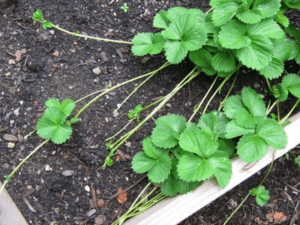
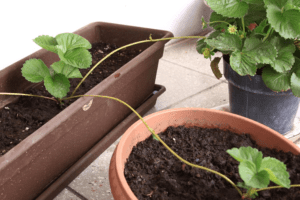
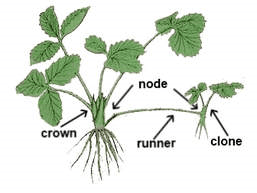
Fertilisers
Most fertilisers are based on the three major plant nutrients:
Nitrogen (N): For green leafy growth
Phosphorus (P): For healthy root and shoot growth
Potassium (K): For flowering, fruiting and general hardiness
All fertilisers should quote their N:P:K ratio on the product packaging. For example, a ratio of 20:20:20 indicates a balanced fertiliser, but a ratio of 18:24:6 would indicate a high phosphorus fertiliser.
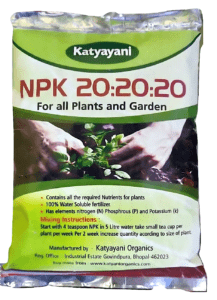
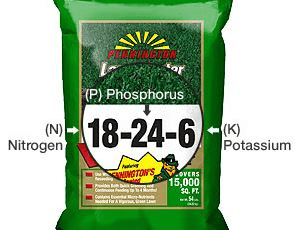
How to use fertiliser
There are many ways to apply fertilisers, and the method you choose will greatly depend on the product you are using. These are some of the most common methods of application, along with examples of when you would use this method.
Top dressing: This is the application of quick-acting fertilisers to the soil surface around plants to stimulate growth, and is usually carried out in spring at the start of the growing season.
Slow release: This is the incorporation of fertiliser into the soil or potting compost before sowing or planting which releases nutrients gradually through the season.
Watering on: Liquid fertilisers or soluble powders and granules can be dissolved or diluted and watered onto plant roots during the growing season to give them an instant boost. They are mainly used for feeding glasshouse crops, pot plants and bedding. The nutrients in liquid fertilisers are instantly available.
Foliar feeding: This is the application of a dilute solution of fertiliser to the leaves of plants, useful as an emergency treatment for correcting nutrient deficiencies or for providing quick supplementary feeding.
